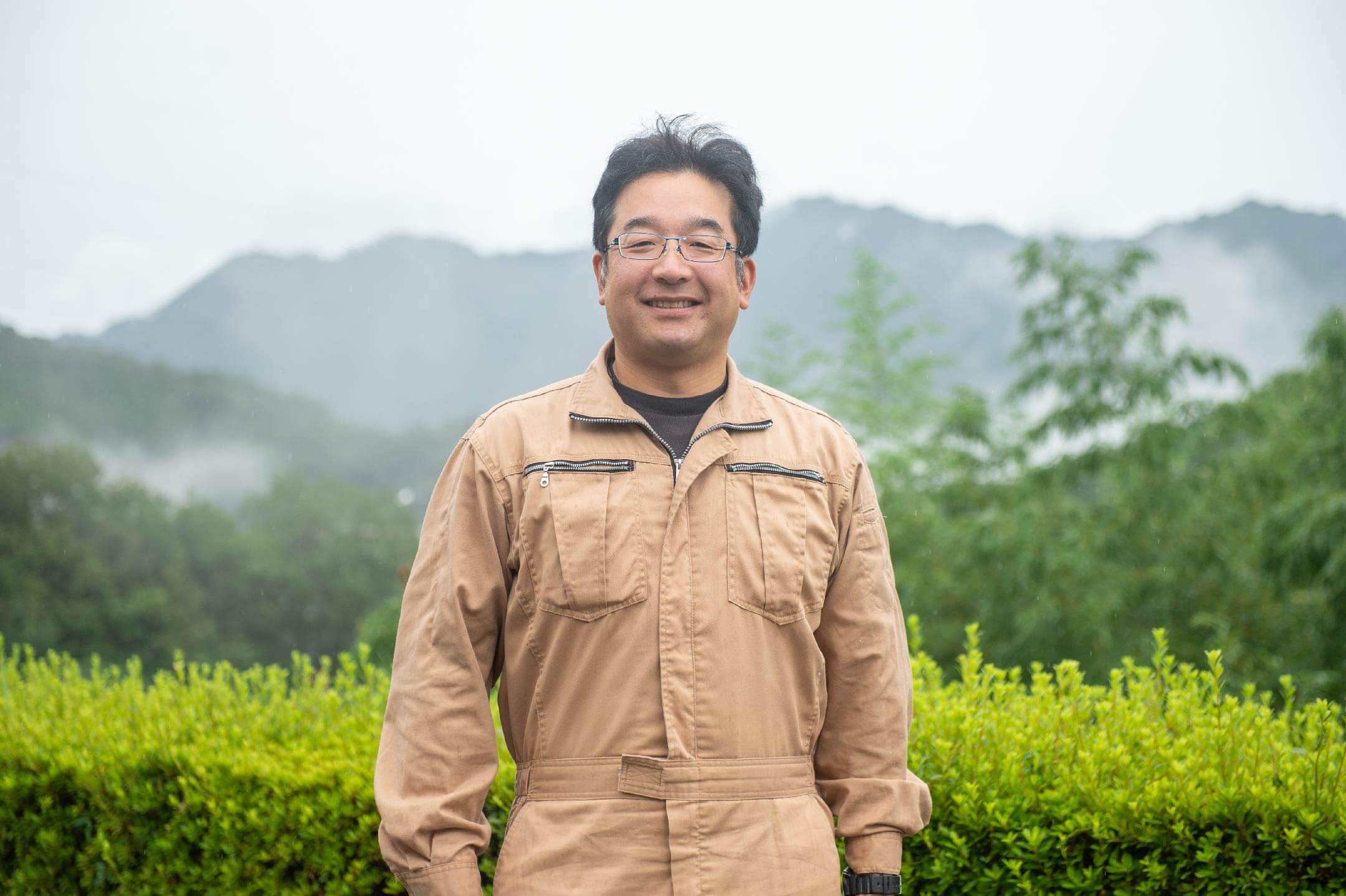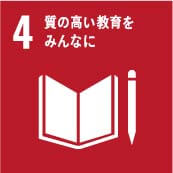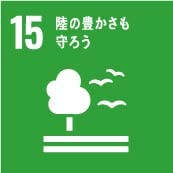Hinokage Town: Cyclic forestry in tune with nature
- Mr. Tateki Kudo Itsuki
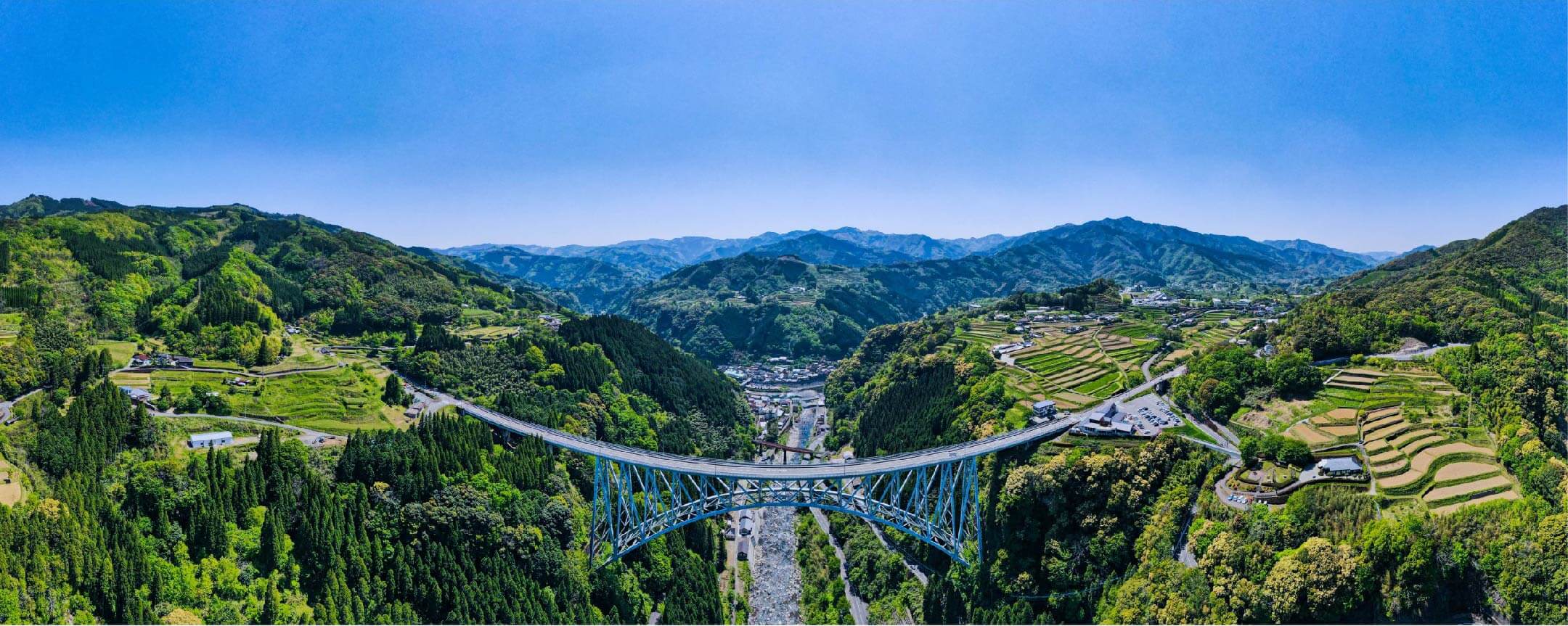
“I felt that the rivers and mountains I saw as a child were changing.”
Mr. Tateki Kudo, born and raised in Hinokage Town, worked in construction away from his hometown before moving back in his late 20s. He took up forestry after speaking with an acquaintance in the forestry union.
It was then that he saw the barren mountainside, once full of lush trees, and realized that the nature that had filled the area in his childhood was slowly dying away.
Mr. Kudo joined Mokuseiren, a group dedicated to the prosperity of the wood industry, and learned from timber business owners in Japan that there is a dire decline in the number of people who protect and nurture mountains. Feeling the need to act, he embarked on the challenge of cyclic forestry. He currently runs his business named “Itsuki” and trains new workers and educates children about trees.
A dire lack of successors—revamping the image of forestry
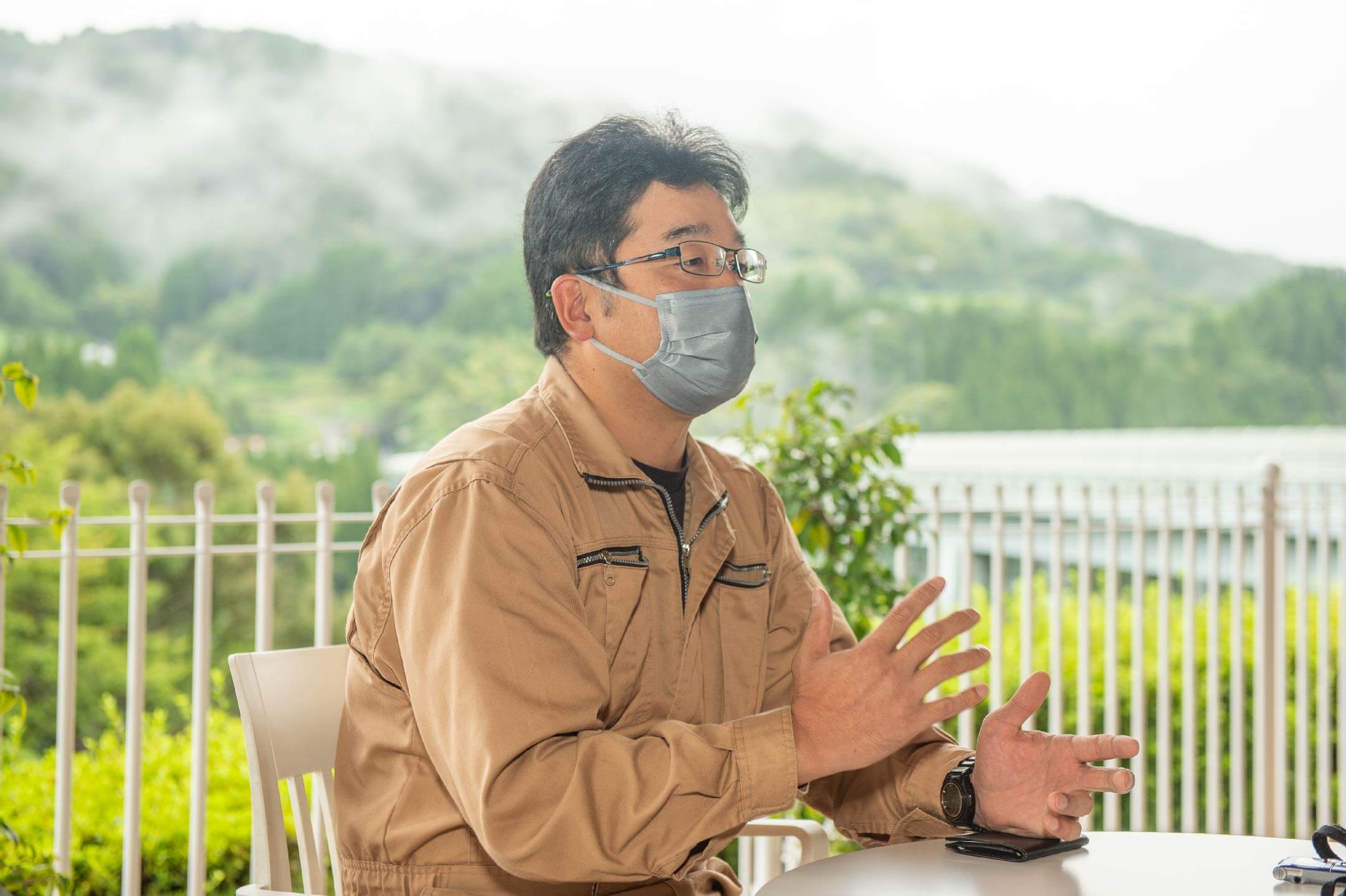
Miyazaki Prefecture is one of the leaders of Japan’s forestry industry, producing the most Japanese cedar material for 30 years straight (Wood Statistics, 2020). However, Mr. Kudo states that they are still behind when it comes to protecting and nurturing mountains.
“The price of materials went up in 2020 due to a rise in demand stemming from COVID-19. Although production is kicking into gear, we’re not keeping up with planting trees. It’s inevitable that there’s more focus on production of material rather than planting, but one of the causes of this is a lack of successors.
In the past, people were more motivated to plant trees because they thought it would be profitable after a generation or two. However, people are starting to think it’s useless because the population in mountain areas is declining, and it’s getting harder to find people who will carry on the work.”
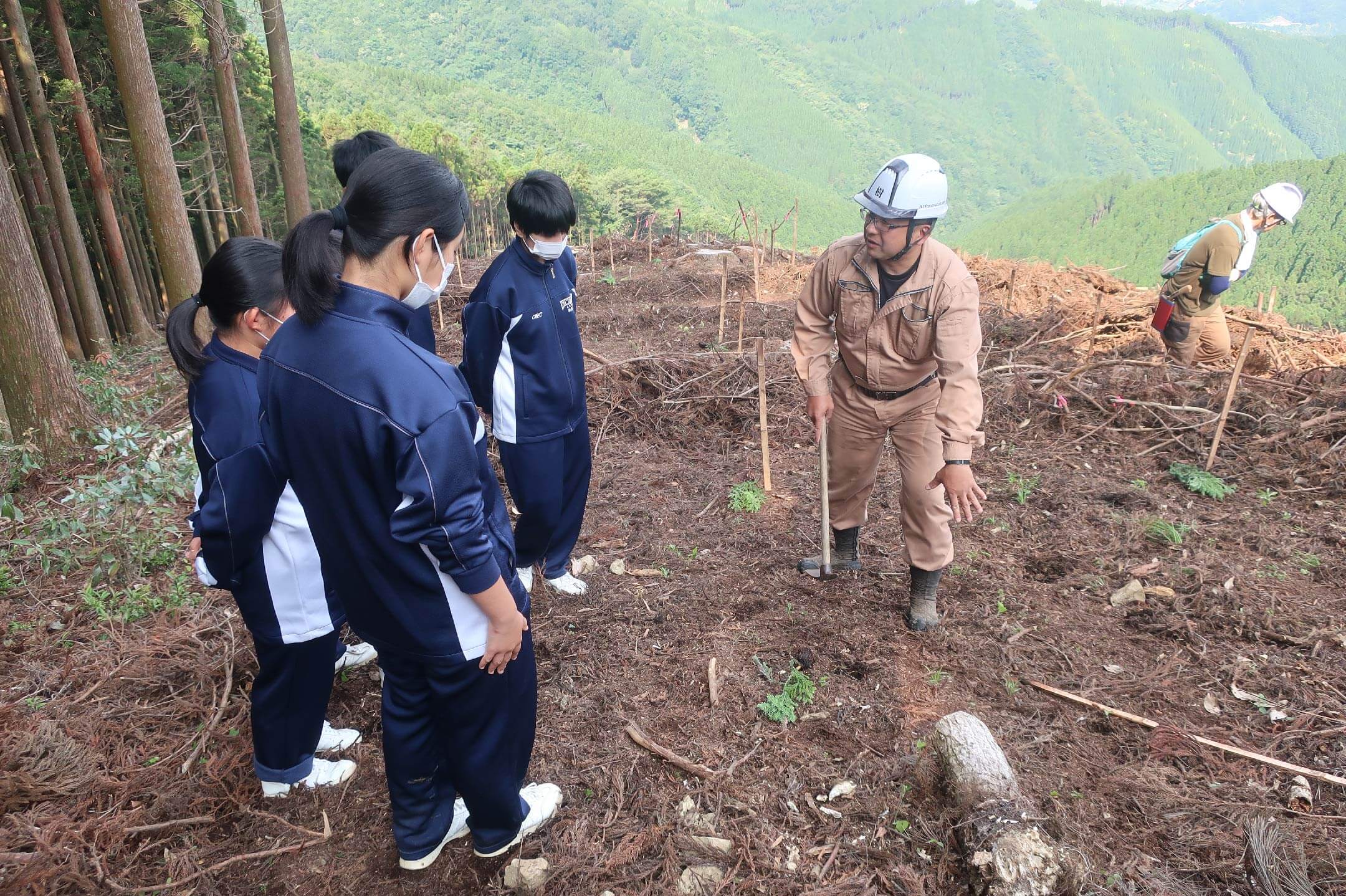
In order to tackle this problem, Hinokage Town is working to revamp the past image of forestry being tough, dirty, and dangerous work by educating local elementary and middle school students on trees and forests. Mr. Kudo himself gives lectures and invites students for hands-on classes.
“Kids often tell me, ‘I thought it’d be more dangerous, but now I feel it’s something I can do myself.’ It seems that coming to the forest and actually experiencing the work really changes their views on forestry. I feel like my work is really paying off when people start seeing this industry as more accessible.”
Nurturing mountains for the next generation
Mr. Kudo states that the cyclic forestry method of planting, growing, cutting, and re-planting trees is not just about reusing forest resources.
“Forests have a lot of functions, and they’re all indispensable for the cycle of nature. Take water retention for example. It rains, the trees temporarily retain water, the water flows to rivers and seas, evaporates, becomes clouds, and comes down as rain again. I feel forests play the most important role in this cycle of nature, and we must protect it at all costs. So it’s not as easy as ‘You cut down a Japanese cedar, and you plant one.’ For mountains with a shallow layer of soil and low water retention as a result of man-made forests, you might need to plant broad-leaved trees first and wait until the soil becomes fertile again.
I believe the cultures of kagura and shimenawa that have been passed down in the Takachihogo-Shiibayama Site are a manifestation of our ancestors’ respect for nature and the belief that we are guests who are allowed to live on Earth. Surely, the people of today share this same sentiment in their heart. It’s really important to make decisions not from a human-centric standpoint but an Earth-centric one.”
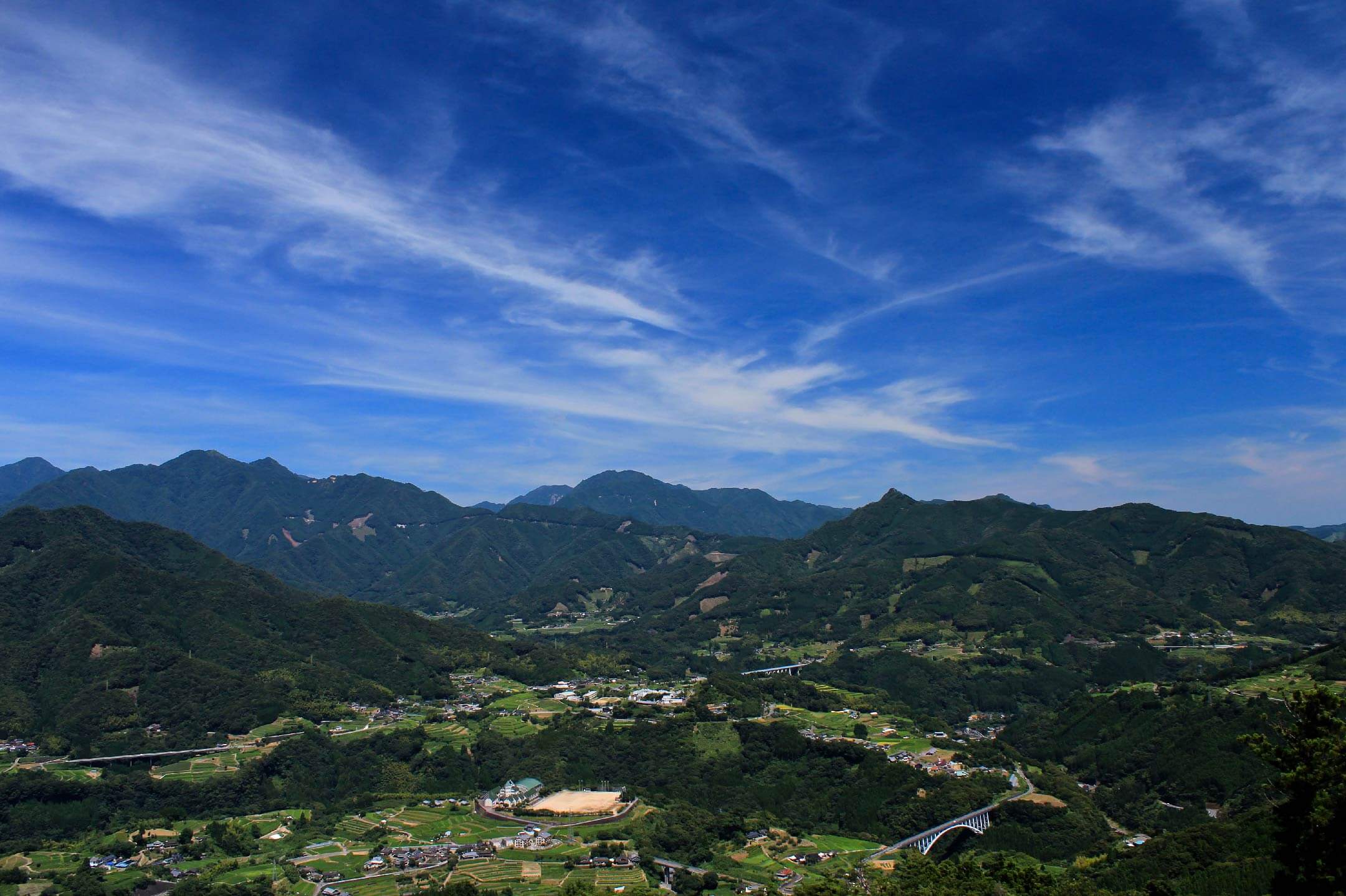
Full view of Hinokage Town (2016 pamphlet)
As Mr. Kudo pursues and promotes the ideal form of forestry that exists in harmony with nature, he has his sights set far into the future.
“Nurturing a mountain isn’t like growing crops in a field. You sow seeds, but you won’t see the results for 40, 50 years. Even still, I’m hoping to continue working on mountains so that we can protect our land and pass down this precious treasure we have. My goal is to one day restore the glory of mountain villages and their forests, rivers, and fields.”
